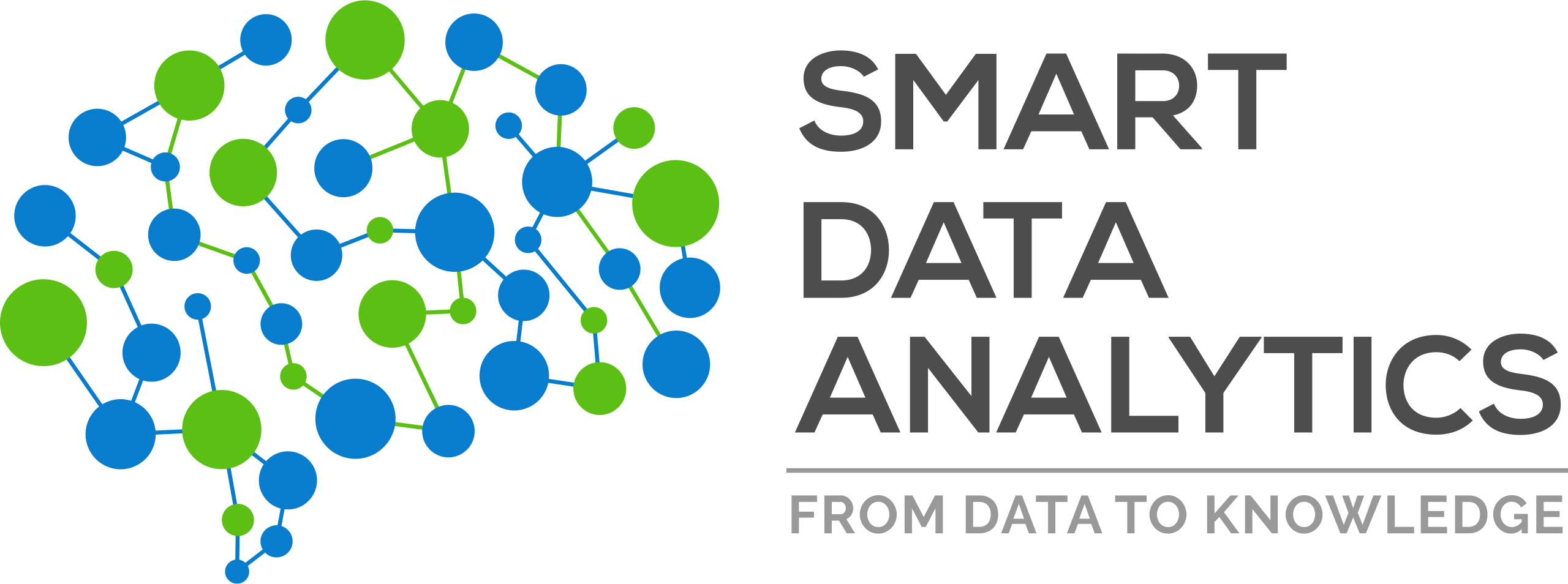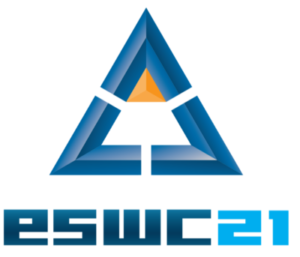We are very pleased to announce that our group got four papers accepted for presentation at ESWC2021. The ESWC is a major venue for discussing the latest scientific results and technology innovations around semantic technologies. Building on its past success, ESWC is seeking to broaden its focus to span other relevant related research areas in which Web semantics plays an important role. The goal of the Semantic Web is to create a Web of knowledge and services in which the semantics of content is made explicit and content is linked to both other content and services allowing novel applications to combine content from heterogeneous sites in unforeseen ways and support enhanced matching between users needs and content. This network of knowledge-based functionality will weave together a large network of human knowledge, and make this knowledge machine-processable to support intelligent behaviour by machines. Creating such an interlinked Web of knowledge which spans unstructured text, structured data (e.g. RDF) as well as multimedia content and services requires the collaboration of many disciplines, including but not limited to: Artificial Intelligence, Natural Language Processing, Databases and Information Systems, Information Retrieval, Machine Learning, Multimedia, Distributed Systems, Social Networks, Web Engineering, and Web Science.
Here are the abstracts and the links to the papers:
-
Grounding Dialogue Systems via Knowledge Graph Aware Decoding with Pre-trained Transformers
By Debanjan Chaudhuri, Md Rashad Al Hasan Rony, and Jens Lehmann.Abstract
Generating knowledge grounded responses in both goal and non-goal oriented dialogue systems is an important research challenge. Knowledge Graphs (KG) can be viewed as an abstraction of the real world, which can potentially facilitate a dialogue system to produce knowledge grounded responses. However, integrating KGs into the dialogue generation process in an end-to-end manner is a non-trivial task. This paper proposes a novel architecture for integrating KGs into the response generation process by training a BERT model that learns to answer using the elements of the KG (entities and relations) in a multi-task, end-to-end setting. The k-hop subgraph of the KG is incorporated into the model during training and inference using Graph Laplacian. Empirical evaluation suggests that the model achieves better knowledge groundedness (measured via Entity F1 score) compared to other state-of-the-art models for both goal and non-goal oriented dialogues. -
Context Transformer with Stacked Pointer Networks for Conversational Question Answering over Knowledge Graphs
By Joan Plepi,, Endri Kacupaj, Kuldeep Singh, Harsh Thakkar, and Jens Lehmann.Abstract
Neural semantic parsing approaches have been widely used for Question Answering (QA) systems over knowledge graphs. Such methods provide the flexibility to handle QA datasets with complex queries and a large number of entities. In this work, we propose a novel framework named CARTON, which performs multi-task semantic parsing for handling the problem of conversational question answering over a large-scale knowledge graph. Our framework consists of a stack of pointer networks as an extension of a context transformer model for parsing the input question and the dialog history. The framework generates a sequence of actions that can be executed on the knowledge graph. We evaluate CARTON on a standard dataset for complex sequential question answering on which CARTON outperforms all baselines. Specifically, we observe performance improvements in F1-score on eight out of ten question types compared to the previous state of the art. For logical reasoning questions, an improvement of 11 absolute points is reached. -
ParaQA: A Question Answering Dataset with Paraphrase Responses for Single-Turn Conversation
By Endri Kacupaj, Barshana Banerjee, Kuldeep Singh, and Jens Lehmann.Abstract
This paper presents ParaQA, a question answering (QA) dataset with multiple paraphrased responses for single-turn conversation over knowledge graphs (KG). The dataset was created using a semi-automated framework for generating diverse paraphrasing of the answers using techniques such as back-translation. The existing datasets for conversational question answering over KGs (single-turn/multi-turn) focus on question paraphrasing and provide only up to one answer verbalization. However, ParaQA contains 5000 question-answer pairs with a minimum of two and a maximum of eight unique paraphrased responses for each question. We complement the dataset with baseline models and illustrate the advantage of having multiple paraphrased answers through commonly used metrics such as BLEU and METEOR. The ParaQA dataset is publicly available on a persistent URI for broader usage and adaptation in the research community. -
A Virtual Knowledge Graph for Enabling DefectTraceability and Customer Service Analytics
By Nico Wilhelm, Diego Collarana, and Jens Lehmann.Abstract
In this paper, we showcase the implementation of a semantic information model and a virtual knowledge graph at ZF Friedrichshafen AG company, with two main goals in mind: 1) integration of heterogeneous data sources following a pay-as-you-go approach; and the 2) combination core domain concepts from ZF’s production line with meta-data of its internal data sources. We employ the developed semantic information model in two use cases, defect traceability and customer service, demonstrating and discussing the benefits and opportuni-ties provided by following an agile semantic virtual integration approach.

